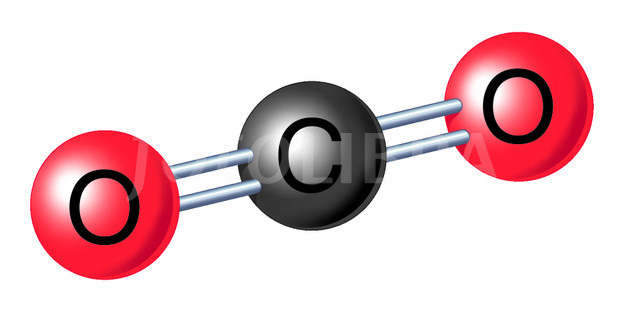 However, the physical size of Methane is much larger and therefore this molecule presents considerably more cross section with respect to outgoing long wavelength IR emission.
 The ratio of absorption cross sections between methane and carbon dioxide is temperature and wavelength dependent on temperature and wavelength, but an aggregate value is around 21. Hence CH4 has 21 times the global warming potential as CO2 or 21x1.9 = 40 ppm CO2 equivalent or about 10% of CO2 So current CO2e = 400 + 40 = 440 ppm That methane has increased due to human industrialization is very clear.


However, over the last 20 years, there has been some odd behavior in the build up of methane in the atmosphere. This is shown below:
 The period from about 1999 through 2007 is when the methane concentration stayed relatively flat(which would be very good news). At the time this was a serious mystery. One of the strong things that controls terrestrial methane emission is the amount and vitality of wetlands: Wetlands emission are key here! The resolution to the flat period as well as the recent, unfortunate rise in emissions seems to be a combination of the following two items:
But it now appears that methane emissions are on the rise again at a rate of about 6 ppb(parts per billion).
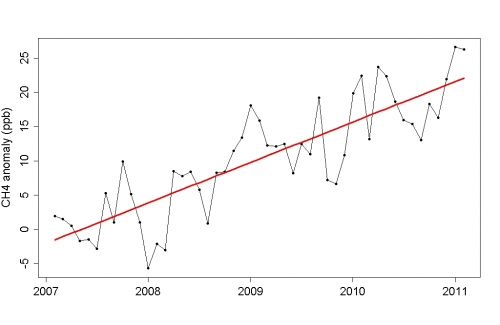 If the current rates in both CO2 and CH4 continue then by the year 2050 we will have this situation:
But we have a potentially larger problem which is the possibility of substantial methane releases from arctic permafrost: and elsewhere Methane release
Standard Methane Sources:
In the US the rate of many sources is either slowly shrinking or stabilizing. This may indicate that developed nations can effectively control their methane emission through better landfill management and possible co-generation or capture and burn. Note that burning methane releases CO2 but that is 21 times less than letting CH4 reach the atmosphere.
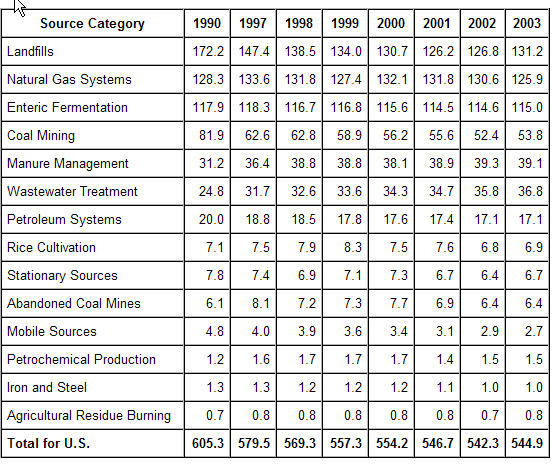
Long term sources of global methane emissions. Note the post WWII inflection point.
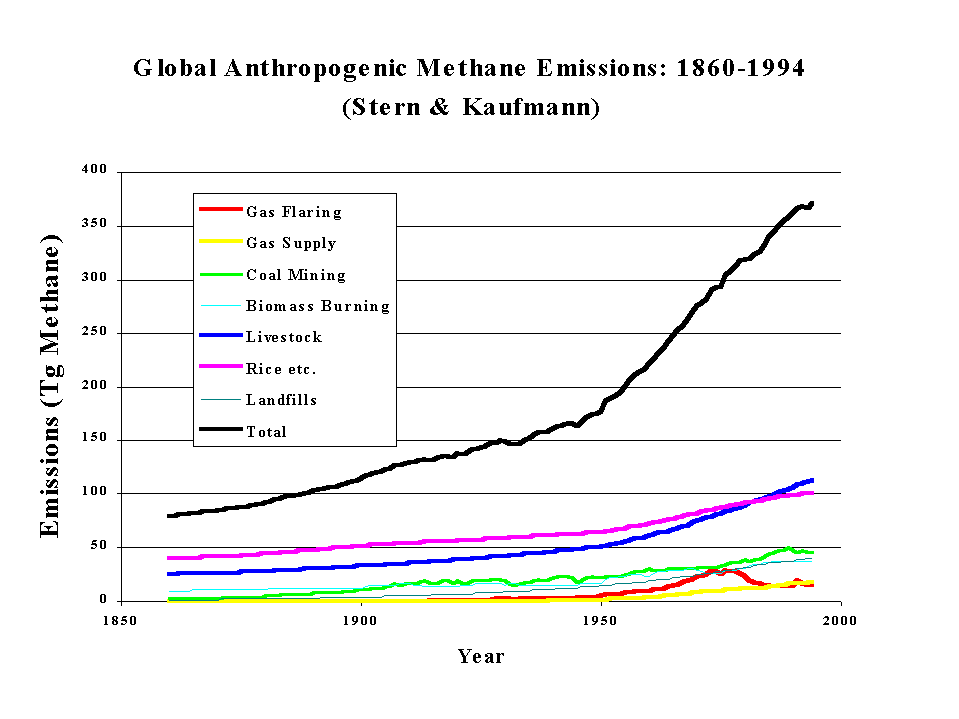
THIS JUST IN
Methane Removal Mechanism (some estimates suggest the methane residence time is up to 12 years so there is no short term equilibrium control): Atmospheric Chemistry (which can be modified by volcanic eruptions like Pinatubo):
CH4 + 2O2
 H2O + CH3O2 H2O + CH3O2  H2CO + HO2 + NO2 H2CO + HO2 + NO2  CH3OOH + O2 CH3OOH + O2  H2 + CO H2 + CO  H2O + CH3O2a H2O + CH3O2a
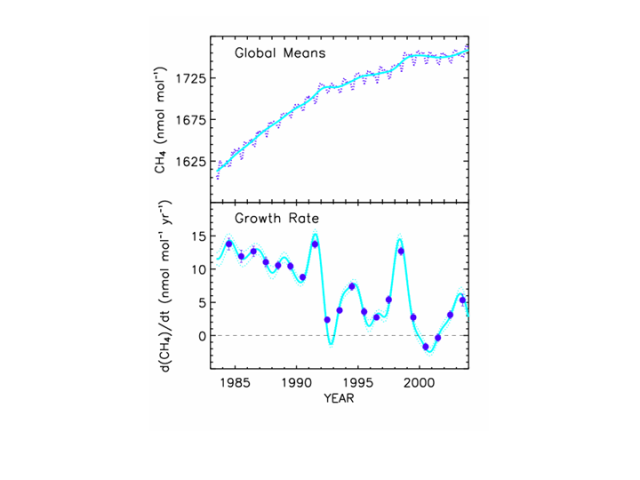

In sum, it is very difficult to predict the future growth of methane retention in the atmosphere but its likely to remain on the rise, especially with more aggressive mining of remaining natural gas reserves and the continued consumption of rice and cows. There is, however, potentially, a much worse problem. A major concern, a positive feedback loop:
 Note, however, that "catastrophic" release of CH4 during period of Ice Ages may be the natural way that the Earth accelerates from a glacial period:
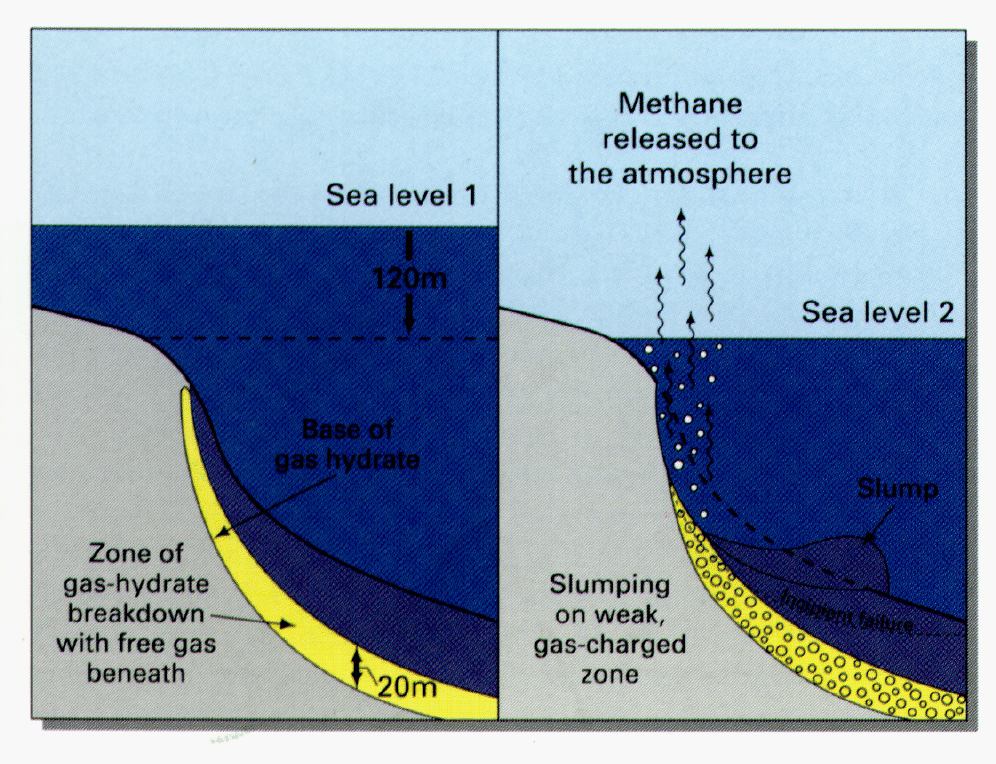 Known Hydrate deposits. Found typically in continental shelf where marine organisms (microbes) actively feed on carbon and carbon related products to produce methane in the sediments.
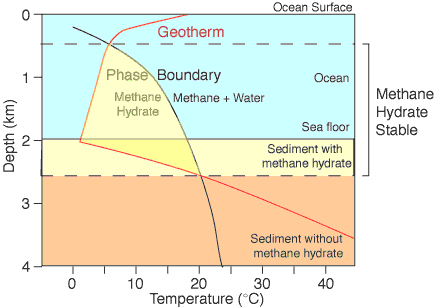
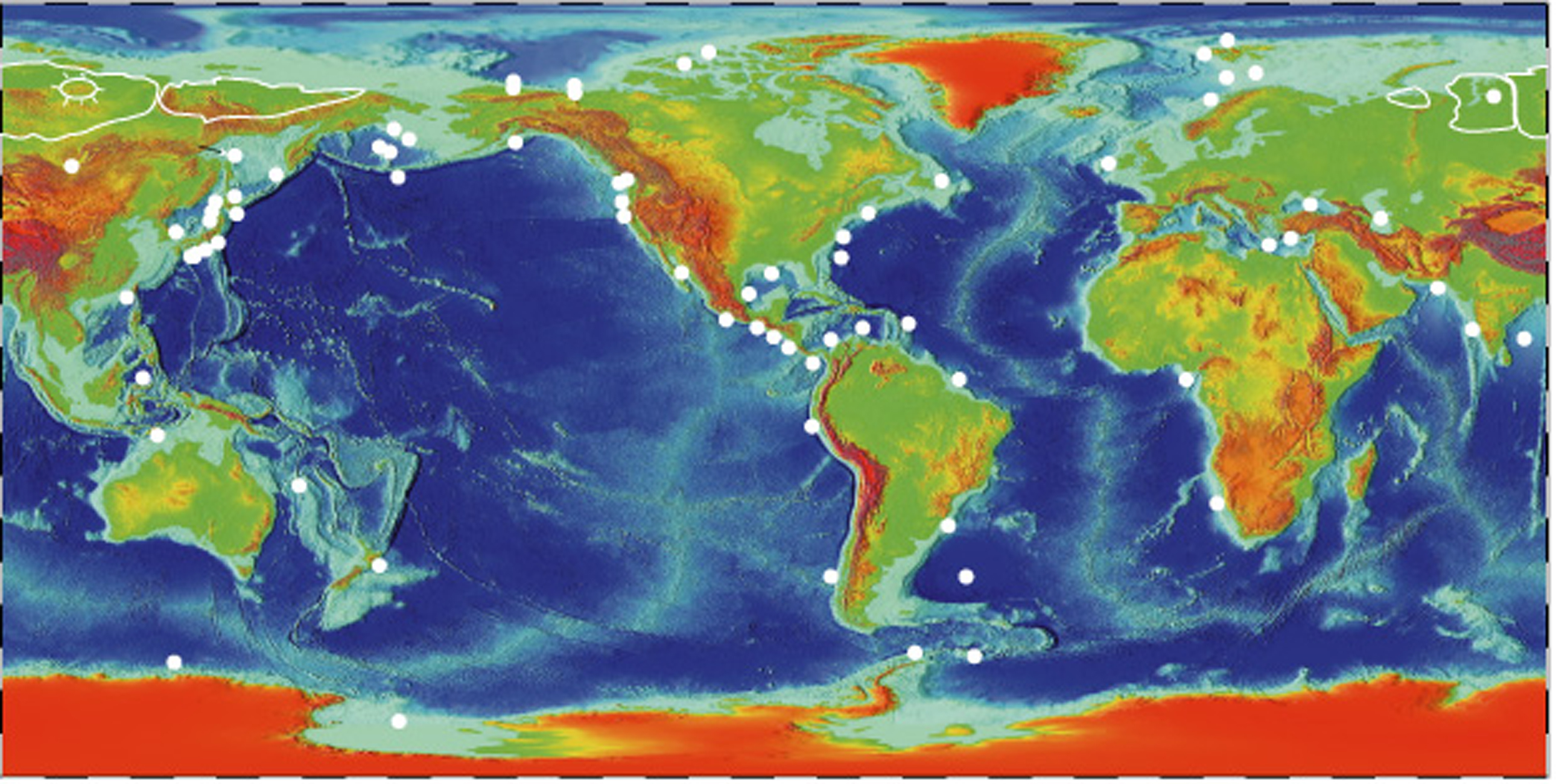
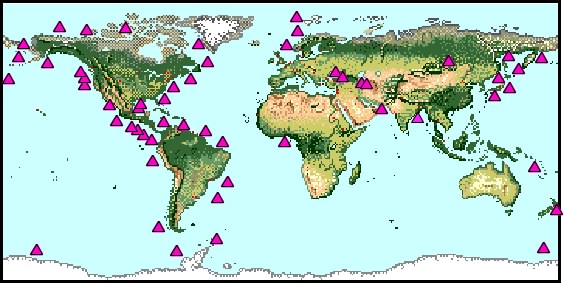 Good overview of the hydrate "problem" And here is a likely scenario which has happened in the geological past
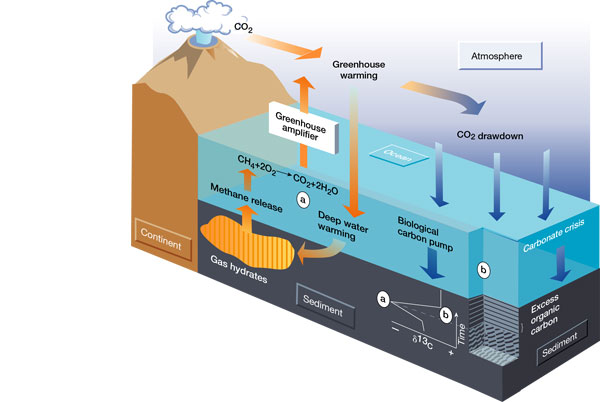
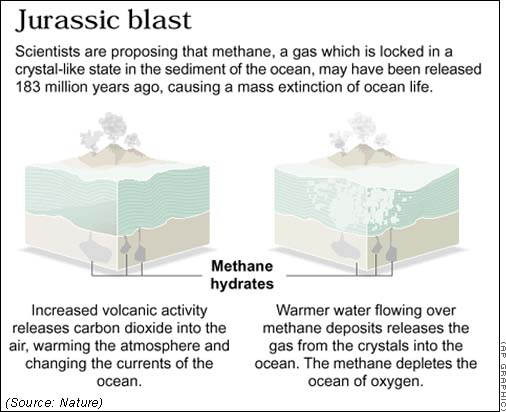
And there is Evidence of this happening within the last 10,000 years
|
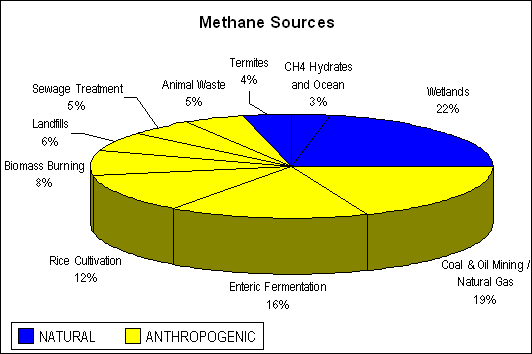
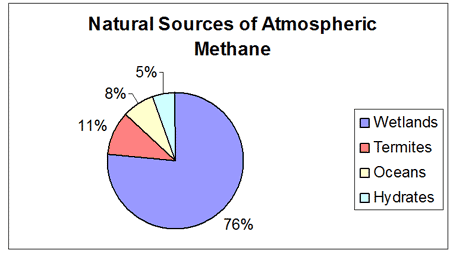
 New satellite measurements indicated
the Amazon Rain Forest produces more methane than previously thought. Other
New satellite measurements indicated
the Amazon Rain Forest produces more methane than previously thought. Other